Related Research Articles

Cleveland, officially the City of Cleveland, is a city in the U.S. state of Ohio, and the county seat of Cuyahoga County. It is located along the southern shore of Lake Erie, across the U.S. maritime border with Canada and approximately 60 miles west of the Ohio-Pennsylvania state border.

Cuyahoga County is located in the northeastern part of the U.S. state of Ohio on the southern shore of Lake Erie, across the U.S.-Canada maritime border. As of the 2020 United States Census, its population was 1,264,817, making it the second-most-populous county in the state.
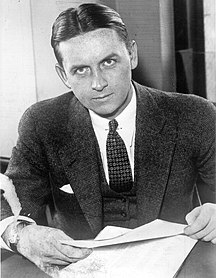
Eliot Ness was an American Prohibition agent, famous for his efforts to bring down Al Capone and enforce Prohibition in Chicago. He was the leader of a famous team of law enforcement agents from Chicago, nicknamed The Untouchables. His co-authorship of a popular autobiography, The Untouchables, which was released shortly after his death, launched several television and motion picture portrayals that established Ness's posthumous fame as an incorruptible crime fighter.

The Cleveland Torso Murderer, also known as the Mad Butcher of Kingsbury Run, was an unidentified serial killer who was active in Cleveland, Ohio, United States, in the 1930s. The killings were characterized by the dismemberment of twelve known victims and the disposal of their remains in the impoverished neighborhood of Kingsbury Run. Most victims came from an area east of Kingsbury Run called "The Roaring Third" or "Hobo Jungle", known for its bars, gambling dens, brothels, and vagrants. Despite an investigation of the murders, which at one time was led by famed lawman Eliot Ness, then Cleveland's Public Safety Director, the murderer was never apprehended.

Elizabeth Short, known posthumously as the Black Dahlia, was an American woman found murdered in the Leimert Park neighborhood of Los Angeles, California, on or before January 15, 1947. Her case became highly publicized due to the gruesome nature of the crime, which included her corpse having been mutilated and bisected at the waist.

The region Northeast Ohio, in the US state of Ohio, in its most expansive usage contains six metropolitan areas along with eight micropolitan statistical areas. Most of the region is considered either part of the Cleveland–Akron–Canton, OH Combined Statistical Area and media market or the Youngstown–Warren, OH-PA Combined Statistical Area and media market. In total the region is home to 4,529,596 residents. Northeast Ohio also includes most of the area known historically as the Connecticut Western Reserve. In 2011, the Intelligent Community Forum ranked Northeast Ohio as a global Smart 21 Communities list. It has the highest concentration of Hungarian Americans in the United States.
Samuel Holmes Sheppard, D.O. was an American neurosurgeon. He was exonerated in 1966, having been convicted of the 1954 murder of his wife, Marilyn Reese Sheppard. The case was controversial from the beginning, with extensive and prolonged nationwide media coverage.
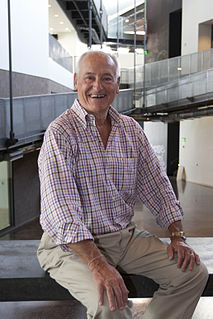
Richard Frank Celeste is an American former diplomat, university administrator and politician from Ohio. A member of the Democratic Party, he served as the 64th Governor of Ohio from 1983 to 1991.
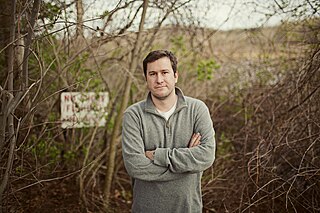
James Renner is an American author, investigative journalist, producer, and director. He worked as a reporter for Cleveland Scene and was editor of the alternative newspaper The Cleveland Independent. He is known for his work in the thriller, science fiction, and true crime genres. In 2019, Renner founded The Porchlight Project, a nonprofit dedicated to offering support for the families of the missing and murdered.

Torso is a true crime limited series graphic novel written by Brian Michael Bendis and Marc Andreyko, with art and lettering by Brian Michael Bendis. It is based on the true story of the Cleveland Torso Murderer, and the efforts of the famous lawman Eliot Ness and his band of the "Unknowns” to capture him.
Cleveland–Marshall College of Law is the law school of Cleveland State University, located on Euclid Avenue in Cleveland, Ohio, United States. The school traces its origins to Cleveland Law School, which merged in 1946 with the John Marshall School of Law to become Cleveland-Marshall Law School. When the school affiliated with Cleveland State University in 1969, it became Cleveland–Marshall College of Law.
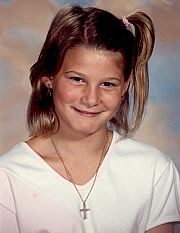
Amy Renee Mihaljevic was a ten-year-old American elementary school student who was kidnapped and murdered in the U.S. state of Ohio in 1989. Her murder case received national attention. The story of her unsolved kidnapping and murder were presented by John Walsh on the television show America's Most Wanted during the program's early years. To date, her killer has not been found, yet the case remains active; new information in 2007 and 2013 has increased hopes of resolving the case. In February 2021, it was announced that a person of interest emerged in the case after a woman contacted authorities in 2019 with potentially valuable information.

Martin Leonard Sweeney was a U.S. Representative from Ohio and the father of Robert E. Sweeney.

The Cleveland Division of Police (CDP) is the governmental agency responsible for law enforcement in the city of Cleveland, Ohio. Michael McGrath was the chief of police since 2005 and then became the Safety Service Director on February 10, 2014, when Calvin Williams was appointed Chief of Police.
Orley May was an American detective in Cleveland, Ohio in the 1930s. May is known for working on the Cleveland Torso Murderer case.

The Ariel Castro kidnappings took place between 2002 and 2004, when Ariel Castro kidnapped Michelle Knight, Amanda Berry, and Georgina "Gina" DeJesus and held them captive in his home in the Tremont neighborhood of Cleveland, Ohio. The three girls were imprisoned until May 6, 2013, when Berry escaped with her six-year-old daughter, to whom she had given birth while imprisoned, and contacted the police. Police rescued Knight and DeJesus and arrested Castro within hours.
Arnold J. Sagalyn was an American journalist, government employee and private consultant.
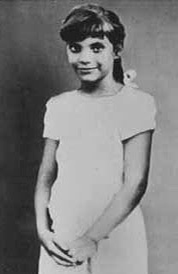
Beverly Rose Potts was an American girl from Cleveland, Ohio who in 1951 became the subject of a famous missing persons case when she disappeared only a few blocks from her home, after attending a show in a nearby park. She has never been found and her disappearance remains unsolved.
Kent Smith is the Representative of the 8th district of the Ohio House of Representatives. Smith is a resident of Euclid, Ohio, and served on the Euclid School Board for 12 years. He also served as head of the Democratic Party for Euclid, and has a degree from the Maxine Goodman Levin College of Urban Affairs at Cleveland State University. In 2014, Smith opted to run for the Ohio House of Representatives to replace Armond Budish, who was term-limited and sought election instead as Cuyahoga County Executive. He faced Republican Mikhail Alterman and Independent Jocelyn Conwell, and won with 71.47% of the vote. He would go on to be re-elected in 2016 and 2018. His district includes the Cuyahoga County communities of Beachwood, East Cleveland, Euclid, Richmond Heights, South Euclid, Woodmere, and parts of Cleveland.
The Greater Cleveland Associated Foundation was a community foundation established in 1961 in Cleveland, Ohio, in the United States to assist other private and community foundations in and around Cleveland in establishing priorities and working to find solutions to pressing social needs. After its second round of funding, GCAF leaders merged the foundation with The Cleveland Foundation, an organization which GCAF had greatly influenced.
References
- 1 2 Badal, James Jessen (2001). In the Wake of the Butcher: Cleveland's Torso Murders. Cleveland: Kent State University Press. ISBN 978-0-87338-689-0.
- 1 2 "About: James Jessen Badal". The Kent State University Press. Retrieved September 12, 2013.
- ↑ van Beers-Werneke, Leanne (July 14, 2013). "Tri-C Professor to Launch Third Torso Murders Book". Cuyahoga Community College. Archived from the original on September 13, 2013. Retrieved September 12, 2013.